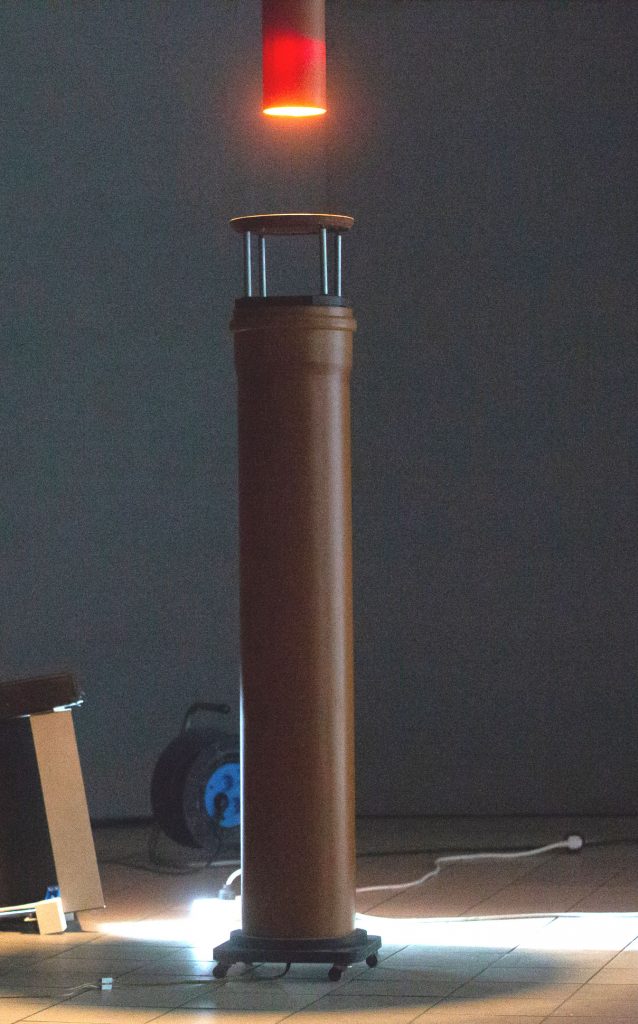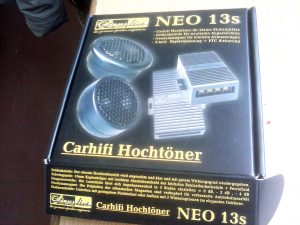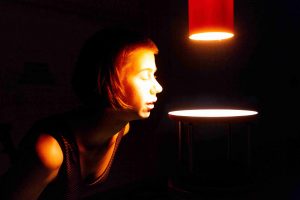The two loudspeakers were built using sewer pipes. This gave the name: Plečniks (suggested by Vlado Repnik, when used in his theatrical performance in 2018 -> HONEY, CINNAMON, RAISINS AND TIME robot fugue for live art / balletquintet w/m Stefan Doepner, Marieke Sophie Werner, Borut Savski and Vlado R. Gotvan). Jože Plečnik was an architect who built most of the representative buildings (and bridges) in Ljubljana – his very post-modern idea was to use large pre-built sewer pipes as pillars for the Barje Church.
In the performance the Plečniks played the role of visual elements and the role of two independent sine-wave generators/ musical instruments. There were two main scenes where they acted: in duets with Marieke and Borut.
The principle of duet is directly referring to another duet listened to a decade ago: Klaus Filip and Kai Fagaschinski – Los Glissandinos (http://arika.org.uk/archive/items/music-lovers-field-companion-07/los-glissandinos). Let this be seen as a tribute to them who still search for beauty…
 The dimensions of sewer tubes used were defined by a small bass/ midrange loudspeaker diameter of about 20cm basket / 18cm cone found in old Focal JM Lab cabinets. The quality of this old woofers looked very good, so i decided to test an idea of transmission line principle with coaxial “tube within tube” – triple folded acoustic path of about 3m resulting length. A quarter wavelength would then provide a bass boost at 25Hz. The folded acoustic transmission line has of course an opening at the bottom.
The dimensions of sewer tubes used were defined by a small bass/ midrange loudspeaker diameter of about 20cm basket / 18cm cone found in old Focal JM Lab cabinets. The quality of this old woofers looked very good, so i decided to test an idea of transmission line principle with coaxial “tube within tube” – triple folded acoustic path of about 3m resulting length. A quarter wavelength would then provide a bass boost at 25Hz. The folded acoustic transmission line has of course an opening at the bottom.
On the other side of the tube the idea was to have woofer and tweeter loudspeakers pointing up and to use some kind of acoustic dispersing principle that would provide an omni-directional effect (the sound going out in 360 degrees). A part of sphere was tried out (well, a glass light disperser…), A Fresnel type of acoustic lense was cut and tried (hm, does it exist at all?). The decision is still not final.
 I bought a new pair of high/ tweeter loudspeakers (13mm voice-coil with ferofluid) with frequency crossover box – going by the trademark name SinusLive. The bandwidth is from 5KHz to 22KHz. They are small Neodym magnet car speakers with capton voice coil and aluminum wire. Since the JM Lab woofer had a funnel in the middle I used it to mount the tweeter in coaxial manner. The woofer also has double coil winding on 40mm capton former with neoflex cone. So, quite some exclusive properties.
I bought a new pair of high/ tweeter loudspeakers (13mm voice-coil with ferofluid) with frequency crossover box – going by the trademark name SinusLive. The bandwidth is from 5KHz to 22KHz. They are small Neodym magnet car speakers with capton voice coil and aluminum wire. Since the JM Lab woofer had a funnel in the middle I used it to mount the tweeter in coaxial manner. The woofer also has double coil winding on 40mm capton former with neoflex cone. So, quite some exclusive properties.
Why omni-directional loudspeakers? The principle is long forgotten, as it was claimed that it does not provide a precise sound image – too dispersed. Some of these solutions are 1960s Zenith Circle of Sound, Harman Kardon Citation X Loudspeaker (1962) and Citation Thirteen (1972), etc. An overview of theser is here http://www.roger-russell.com/omni/omni.htm.
Today, pointed sound source is preferred – as if all rooms were anechoic. Here i disagree quite strongly – based on quite a lot of experiences in setting up specific non-directional systems – mostly for public art performances. My realization: the sound has to reflect from walls/ objects before the direct sound from the loudspeakers reaches the ear. In this way the notion of source of sound is the walls/ objects – not the loudspeaker itself. In this way also the listening position is much wider. Luckily, the approach is coming back! The new solutions are: Omuni Audio http://www.omuniaudio.com, Duevel https://www.duevel.com,
The demand for phase coherence of sound source is totally out of line. It never happens outside of anechoic rooms. Even more, the phase coherence is undesirable – the sound should reflect as much as possible before reaching the ear. So: what matters is the first reflection (image) that the ear catches. Of course, the reflection factor of walls must be kept reasonably low – as is normal at home.
More to follow.
